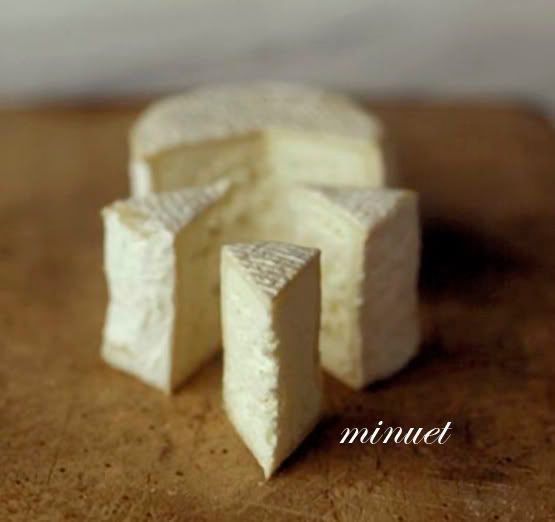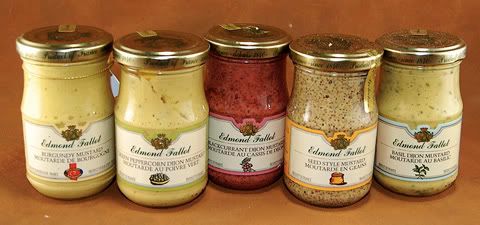
I've been asked what wine will excite a summer of laid back, easy to fix fare.
Central Coast of California
Saint Andre de Figuiere 2009 $18
Cote de Provence
Roses are the perfect wine for summer since they're light,
excellent chilled on ice or in the fridge.
They especially go great with seafood, salads and light goat cheeses.
Three great Roses* to drink right now:
Palmina Pinot Grigio $21excellent chilled on ice or in the fridge.
They especially go great with seafood, salads and light goat cheeses.
Three great Roses* to drink right now:
Fermented on the skins for 15 days, the wine has a beautiful, pinkish hue.
It's an excellent example of how Pinot Grigio is related to Pinot Noir.
It's an excellent example of how Pinot Grigio is related to Pinot Noir.
Saint Andre de Figuiere 2009 $18
Cote de Provence
Very Elegant and Pretty Wine
This is the poor mans Domaine Ott @$45
Domaine Phillipe Gilbert 2009 $28
From the Menetou-Salon area, next door to Sancerre, in the Loire Valley
This rose is made from Pinot Noir grapes and is hard to get.
How Rose Is Made
Roses are made from the skins of the red, black or purple grapes used to make red wines, but taste more like a white wine.Don't confuse rose with zinfandel just because they are both light pink in color.
Zinfandels is made from the zinfandel grape and white grapes, and it's usually a bit sweet and not dry, unlike white wines which are more dry and not usually sweet.
The difference between white and red winemaking is white wines get crushed, pressed and fermented, while red wines ferment on the skins.
Dry, yet flavorful, roses have gotten better over the years
because now they're made on purpose. They used to be a by product of red wine.
During saignee (French for the word bled and pronounced son yeah), the correction process of the fermentation of the principal wine varietal,
or "bleeding off the vats" the lighter colored juice was allowed to ferment.
Now roses are made more often with maceration, which is direct contact with the skins of the grapes.
The red wine grapes are crushed and and the skins and the juice stay together for a designated period of time, days or weeks, depending on what the vintner is
trying to accomplish.
The color and the flavor are the result of how long the skins and the juice are allowed to stay together.
That's why rose has the characteristics of a white wine but it's made with red grapes.

Two Chevres
Minuet Goats Milk Cheese from Andante Dairy in Petaluma, California(great served with creme fresh)
A former biochemist and dairy scientist, Soyoung Scanlan is the cheesemaker.
Le Chevrot, from the Loiree has a little bit of the barn aromatic.

Goat Cheeses*
Apple Cider Balsamic Dressing*
Edmund Fallot Dijon Mustard*
Grilled Herbed Whole Fish
Prepare the fish:
Pack with aromatic herbs in the cavity (think south of France)+
Sprinkle salt, pepper, drizzle with olive oil
Bake or Grill
Apple Cider Balsamic Salad Dressing
Extra Virgin Olive Oil - we have a very special olive oil from the Raffanelli VineyardGrown in the Dry Creek Valley AVA and pressed from hand-picked, estate-grown olives, the oil is unfiltered and the hand-crafted hobby of David Rafanelli. It seems like he spends more time making this oil than he does making his wines, it's that good!!
(Speaking of Zinfandel, we are the only ones who carry their Zinfandel,Cabernet and Merlot.)
Edmund Fallot Dijon Mustard
Shallots - thinly siliced or minced
Add a little Lemon Juice and a little bit of
the Apple Bouqet Methode Balsamique from Normandy
* Product available at The Cheese Store of Beverly Hills
*Photo Credit Anya Wabnig
_________________________________________________________________
More About The Herbs Used in the Cuisine of The South of France.
This perfect explanation is from the We Love France Blog:
"The local Provence cuisine exploits the profusion of regional herbs such as lavender, thyme, sage, rosemary, basil, savory, fennel, marjoram, tarragon, oregano, and bay leaf and they are included generously in all the dishes in one combination or another.
Herbes de Provence (Provençal herbs) is a mixture of dried herbs gathered in the Provence countryside invented in the 1970s to meet the ever rising public interest outside of the region. The mixture typically contains rosemary, marjoram, basil, bay leaf, thyme, and sometimes lavender flowers and other herbs. The proportions vary by manufacturer but thyme usually dominates the taste produced by the herb mixture. These mixtures are predominantly used to flavor grilled foods such as fish and meat, as well as vegetable stews. The mixture can be mixed with olive oil and added to foods before cooking to infuse the flavor into the cooked food, or during cooking, but they are rarely added after the cooking is complete."
I wanted to buy some gruyere cheese for apple cider salad
ReplyDelete